Related Research Articles

Chaddesden, also known locally as Chadd, is a large residential suburb of Derby, United Kingdom. Historically a separate village centred on Chaddesden Hall and the 14th century St Mary's Church, the area was significantly expanded by 20th-century housing developments, and became part of the then County Borough of Derby in 1968, prior to Derby's city status in 1977.
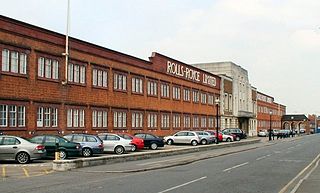
Osmaston is a suburb of Derby, England. It is about 3 miles south of the city centre. It is written in the Domesday Book as Osmundestune. In 1307, the manor of Osmaston was granted to Robert Holland. It was the location of Osmaston Hall, the residence of the Wilmot baronets of Osmaston.

Stretton en le Field is a small village and civil parish in the North West Leicestershire district of Leicestershire, England, about 7 miles/11 km south-west of Ashby de la Zouch, historically an exclave of Derbyshire. According to the 2001 census, the parish had a population of 36. At the 2011 census the population remained under 100 and so was included in the civil parish of Chilcote. Stretton Bridge carries the A444 road across the River Mease, which forms the northern parish boundary. It is among the Thankful Villages, suffering no Great War fatalities in 1914–1918: eleven men went from the village to fight and all returned.
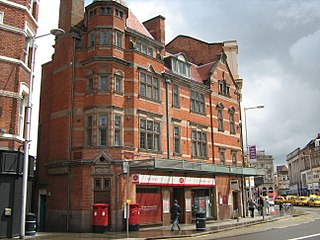
Alexander MacPherson,, was an English architect. Although born in Nottingham he worked for the majority of his career in and around Derby, where he had moved in 1880. He served as president of the Nottinghamshire and Derbyshire Architectural Society.

Derwent was a village 'drowned' in 1944 when the Ladybower Reservoir in Derbyshire, England was created. The village of Ashopton, Derwent Woodlands church, and Derwent Hall were also 'drowned' in the construction of the reservoir.

Okeover Hall is a privately owned Grade II* listed country house in Okeover, Staffordshire, England. It is the family seat of the Okeover family, who have been in residence since the reign of William Rufus. The house lies close to the border between Staffordshire and Derbyshire, which lies on the far side of the small River Dove. The Hall is not open to the public.

This is a list of Sheriffs of Derbyshire from 1567 until 1974 and High Sheriffs since.
There have been three baronetcies created for persons with the surname Wilmot, one in the Baronetage of Ireland and two in the Baronetage of Great Britain. One creation is extant as of 2008.
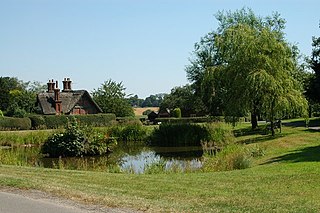
Osmaston is a small village and civil parish in the Derbyshire Dales in the county of Derbyshire in England. The population of the civil parish as taken at the 2011 Census was 140.

The Walker, later Walker-Okeover Baronetcy, of Gateacre Grange in the County of Lancaster and Osmaston Manor in the County of Derby, is a title in the Baronetage of the United Kingdom. It was created on 12 February 1886 for Andrew Walker, a brewer, Lord Mayor of Liverpool, High Sheriff of Lancashire and benefactor to the city of Liverpool.
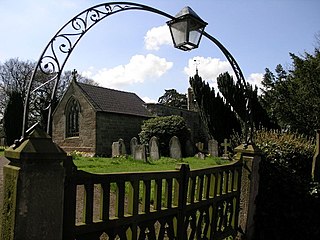
Edlaston is a village three miles south of Ashbourne in Derbyshire, just off the A515 road. It is in close proximity to the hamlet of Wyaston, and the civil parish is called Edlaston and Wyaston. It had a population of 220 at the 2011 Census.

St Mary's Church is a Church of England parish church in Chaddesden, a suburb of Derby, England. One of the oldest churches in the city, it is a Grade I listed building dating back to the mid-14th century.

Osmaston Hall was a country house built in 1696 in extensive grounds at Osmaston, Derbyshire, now an area of the city of Derby. The house was the home of the Wilmot baronets, and the Fox family before being used for a golf club and railway business. It was demolished in 1938, with the site now occupied by an industrial estate.

The Baronetcy of Cockayne of Ashbourne was created in the Baronetage of England on 10 January 1642 for Aston Cockayne, Lord of Ashbourne Hall, Derbyshire and Pooley Hall, Polesworth, Warwickshire.

William Robert Raynes was a British politician. He was a socialist Member of Parliament, alderman and Mayor of Derby. He helped plan a scheme for the River Derwent and there is a major road in Derby – Raynesway – that is named after him.

Pooley Hall is a Manor house built in 1509 on the outskirts of Polesworth, Warwickshire, England. It is a Grade II* listed building and a private residence.
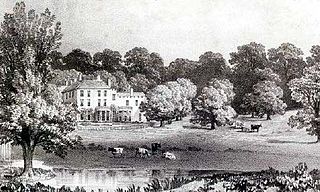
Ashbourne Hall is a Manor house originally built by the Cockayne family in the 13th century in Ashbourne, Derbyshire. The present building is part of a largely demolished, Georgian-styled hall built in the 18th century.

Francis Wright JP DL, was a British industrialist and philanthropist.
References
- Maxwell Craven, Michael Stanley (2002), The Lost Houses of Derbyshire, Landmark, ISBN 9781843060642
- England's lost country houses http://www.lostheritage.org.uk/lh_complete_list.html